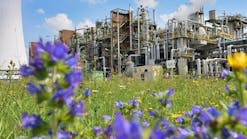HMEL lets contract for Guru Gobind Singh refinery’s petchem project
HPCL-Mittal Energy Ltd. (HMEL) has let a contract to CB&I, Houston, to provide technology licensing and engineering for a grassroots mixed-feed ethylene plant at its 9 million-tonne/year Guru Gobind Singh refinery at Village Phullokhari, about 35 km from Bathinda in India’s northern state of Punjab.
Alongside providing detailed engineering for its proprietary highly selective Short Residence Time VII cracking heaters for the 1.2 million-tpy ethylene plant—which will be expandable to 1.5 million tpy—CB&I’s scope of work on the project includes enabling recovery of refinery off gas and integration with the mixed-feed unit, as well as pyrolysis gasoline hydrogenation, the service provider said.
CB&I revealed neither the value nor duration of the contract.
Guru Gobind Singh expansion
The new ethylene plant comes as part of HMEL’s proposal to build an integrated petrochemical manufacturing site (Guru Gobind Singh Polymer Additions Complex) within Guru Gobind Singh’s existing refinery complex to help maximize returns as well as expand its product portfolio, according to documents filed with India’s Ministry of Environment, Forest & Climate Change (EFCC).
The new dual-feed ethylene plant will include the steam cracker, refinery off-gas treatment unit, C4 hydrogenation unit, pyrolysis gasoline hydrogenation unit, and benzene extraction unit.
HMEL also plans to include the following units as part of the petrochemical addition at the refinery:
• A 55,000-tpy butene-1 unit.
• Two 400,000-tpy linear low-density/high-density polyethylene (LLDPE, HDPE) swing units.
• An 450,000-tpy HDPE unit.
• A 500,000-tpy polypropylene unit.
The project additionally will include captive utility generation installations (recirculating cooling-water system, compressed air system, inert gas system, fuel gas system, flare system, condensate polishing unit, and demineralization water treatment system) as well as offsite-storage facilities for the following:
• Liquid on and off-spec ethylene.
• Liquid on and off-spec propylene.
• Hydrogenated C4 mix and off-spec C4.
• Raw pyrolysis gasoline.
• C6 cut.
• Butene-1.
• Benzene.
• Pyrolysis fuel oil and carbon-black feedstock.
• Hydrogenated pyrolysis gasoline.
• C9+ cut.
• C6+ oligomer.
• Slop.
• Hexane.
• Pentane.
• Hexene-1.
• Bagging.
The refinery will supply its own streams of refinery fuel gas, LPG, heavy naphtha, and light kerosine as feedstock for the new petrochemical complex, while HMEL will outsource supplies of hexane, hexene-1, and pentane to feed the complex’s polymer units, EFCC said.
HMEL also is executing its 11 billion-rupee upgrading project to meet Bharat Stage (BS) 6-grade (equivalent to Euro 6-quality) fuel specifications at the Guru Gobind Singh refinery as part of the public-private partnership’s broader plans to expand the manufacturing site’s crude processing capacity to 11.25 million tpy from its current 9 million-tpy capacity (OGJ Online, June 26, 2017).
Approved for environmental clearance by EFCC in June 2015, the capacity expansion, now under way, includes a combination of new units as well as debottlenecking work at existing units to improve throughput rates.
The BS 6-grade fuel specifications project is scheduled to be commissioned by September 2019, HMEL said.
Contact Robert Brelsford at [email protected].
